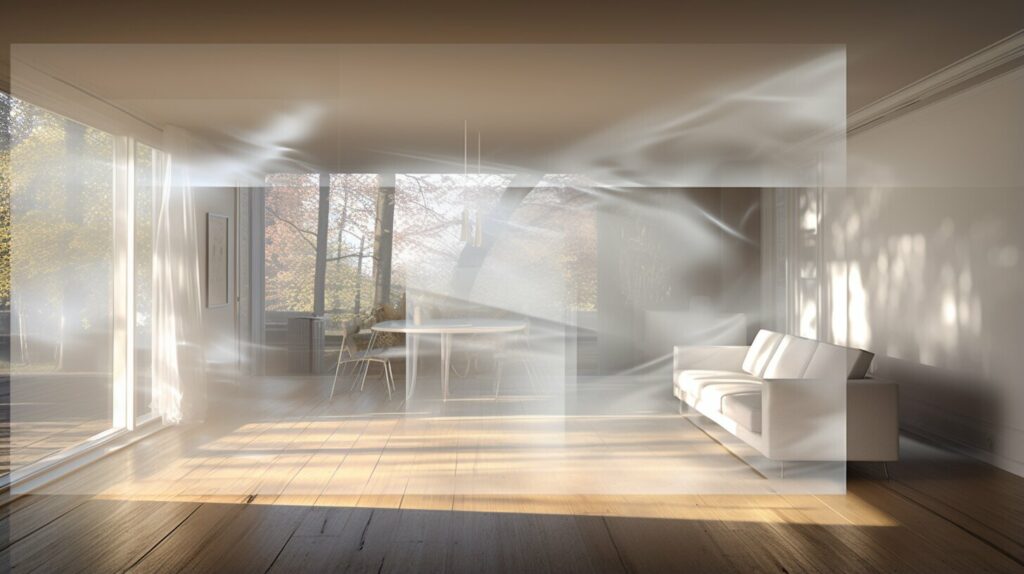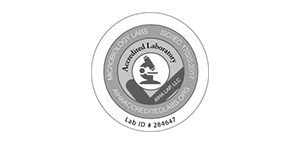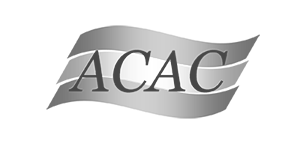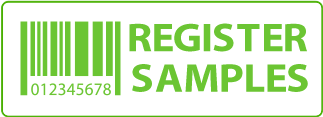
What If I Smell Mold But Don’t See It?
Have you ever experienced a mysterious mold smell in your home, but can’t seem to locate the source of the odor visually? Smelling mold but not seeing it can be a concerning and frustrating situation, as it poses potential health risks and can be difficult to resolve without professional help.
In this section, we will explore the possible reasons for the mysterious mold smell, the health risks associated with hidden mold, and effective solutions to protect your home and your health.
Key Takeaways:
- Smelling mold without visual evidence can be a sign of hidden mold growth.
- Even invisible mold can pose serious health risks, including respiratory issues and allergic reactions.
- There are practical solutions for handling the situation when you can smell mold but cannot find it visually, such as identifying the source of the smell and controlling moisture to prevent mold growth.
Detecting Hidden Mold: Signs of Mold without Visual Evidence
If you smell mold but don’t see it, you might be dealing with hidden mold. Although mold is often visible, it can grow in concealed areas such as inside walls, under floors, or in ductwork. Here are some common signs that can help you detect hidden mold.
Odor with No Apparent Mold Growth: A musty odor is a typical sign of hidden mold. If you smell dampness, mustiness, or earthiness without seeing mold, there may be hidden mold growing somewhere in your home.
Identifying Mold without Visible Signs: Sometimes mold can be present without visible signs. One way to identify it is to use a moisture meter to detect moisture levels in walls, ceilings, and floors. If there is high moisture, there is a possibility of mold growth. Additionally, a mold testing kit can help detect mold spores in the air. A professional mold inspector can also be hired to identify hidden mold.
Water Damage: If you’ve had a water leak or flood in your home and haven’t repaired it properly, it’s likely that mold is growing in the affected area. If you notice any water damage, such as discoloration, stains, or warped wood, inspect the area thoroughly for mold.
It’s important to detect hidden mold as soon as possible to prevent health risks and further damage to your home. In the next section, we will discuss the health risks associated with hidden mold.
Health Risks Associated with Hidden Mold
The mysterious mold smell in your home might be more than just an unpleasant odor. Even if you can’t see the mold, inhaling mold spores can cause health issues for you and your family.
Some people are more sensitive to mold than others. Individuals with weakened immune systems, allergies, or chronic respiratory conditions are more likely to experience health problems due to mold exposure.
Inhaling mold spores can cause respiratory symptoms such as coughing, wheezing, and difficulty breathing. It can also lead to skin and eye irritation, as well as headaches and fatigue.
If left untreated, mold can even cause more serious health problems such as fungal infections. It is crucial to address hidden mold issues promptly to prevent any potential health risks.
Remember, just because you don’t see visible mold doesn’t mean it’s not there. If you smell a musty odor or notice any other signs of mold, it’s important to take action immediately.
Effective Solutions for Smelling Mold but Not Seeing It
If you can smell mold but cannot find it visually, it is important to take action to prevent further mold growth and potential health hazards. Here are some steps you can take:
Identify the source of the mold smell: Start by checking common areas where mold growth may occur, such as the bathroom, kitchen, laundry room, and basement. Inspect these areas for any visible signs of mold, such as discoloration or dampness. If you cannot find any visible mold, try to locate the source of the odor by following your nose. It may be coming from an area where moisture is present.
Control moisture: Since mold thrives in damp environments, it is essential to reduce moisture levels in your home. Fix any leaks or water damage immediately and ensure proper ventilation in areas prone to moisture build-up.
Use air purifiers: Air purifiers can help remove mold spores and other harmful pollutants from the air. Be sure to choose a purifier with a HEPA filter, which can capture small particles such as mold spores and other allergens.
Call for professional help: If you are unable to find the source of the mold smell or suspect a more severe mold infestation, it may be time to call a mold remediation specialist. These professionals can conduct mold testing, identify the source of the mold, and safely remove it from your home.
By taking these steps, you can effectively address the mysterious mold smell in your home and prevent further mold growth. Remember, prompt action is crucial to protecting your home and your health from the harmful effects of mold exposure.
Protecting Your Home and Health from Hidden Mold
It’s important to take proactive measures to protect your home and health from hidden mold. Here are some tips to ensure a mold-free environment:
1. Regular inspections: Regularly inspect your home, particularly areas that are prone to moisture buildup, such as bathrooms, kitchens, and basements. Use your nose to detect any musty smell without mold present and address the issue immediately.
2. Control moisture: Mold thrives in moist environments, so it’s essential to keep your home dry. Repair any leaks immediately, and use a dehumidifier in areas with high humidity.
3. Increase ventilation: Proper ventilation helps to circulate fresh air throughout your home, reducing the chances of mold growth. Consider installing exhaust fans in your bathroom and kitchen, and ensure proper ventilation in your attic.
4. Clean regularly: Regular cleaning helps to remove mold spores and prevent the growth of mold. Use an effective cleaner to wipe down surfaces and prevent moisture buildup.
5. Seek professional help: If you’re unsure whether you have hidden mold, or if you’re experiencing any mold-related symptoms, seek professional help. A professional mold inspection can identify hidden mold, and a certified mold remediation company can handle the removal process safely and effectively.
FAQ
Q: What if I smell mold but don’t see it?
A: In this section, we will address the concern of smelling mold without visual evidence. We will explore the possible reasons for the mysterious mold smell and the health risks associated with hidden mold. Additionally, we will provide effective solutions to protect your home and your health.
Q: How can I detect hidden mold without visual evidence?
A: In this section, we will discuss common signs and indicators of hidden mold when you cannot visually see it. We will explore how to recognize a musty odor without visible mold growth and other clues that can help identify the presence of mold even when it’s not immediately visible.
Q: What are the health risks associated with hidden mold?
A: Here, we will delve into the potential health risks associated with mold exposure, particularly when it is not visible. We will discuss the effects of inhaling mold spores, the symptoms of mold-related illnesses, and why it is crucial to address hidden mold issues promptly.
Q: What are effective solutions for smelling mold but not seeing it?
A: In this section, we will provide practical solutions for handling the situation when you can smell mold but cannot find it visually. We will discuss steps you can take to identify the source of the mold smell, methods to control moisture and prevent mold growth, and when it may be necessary to seek professional help.
Q: How can I protect my home and health from hidden mold?
A: In the final section, we will emphasize the importance of taking proactive measures to protect your home and health from hidden mold. We will provide tips for mold prevention, regular inspections, maintaining proper ventilation, and other practices to ensure a mold-free environment.







